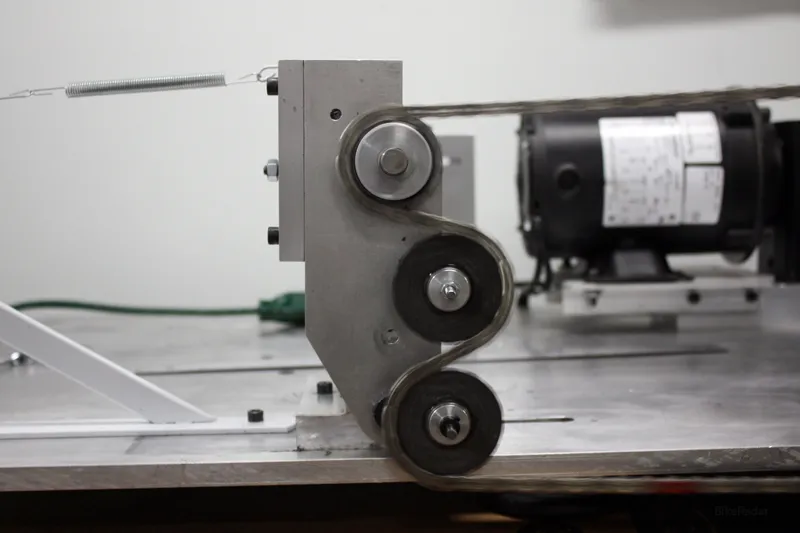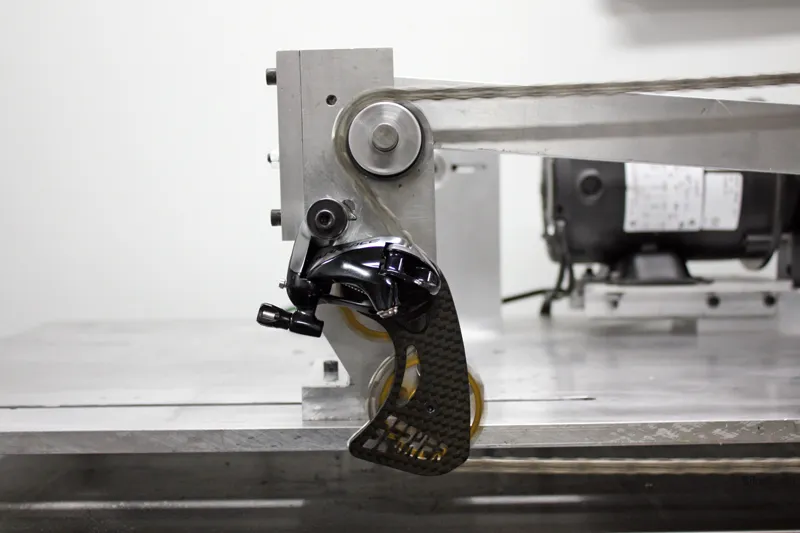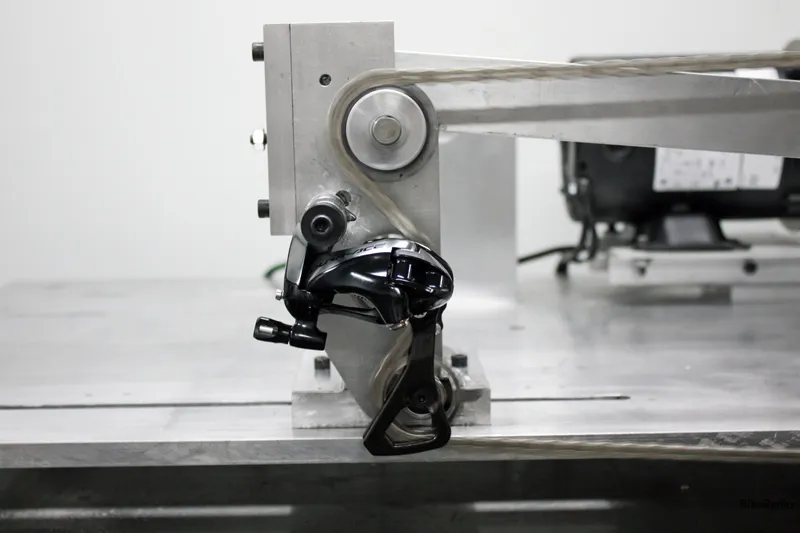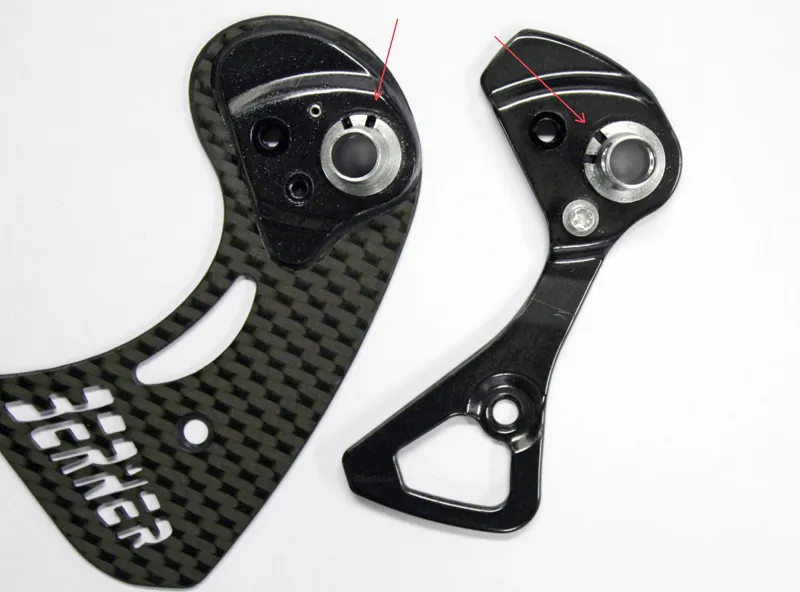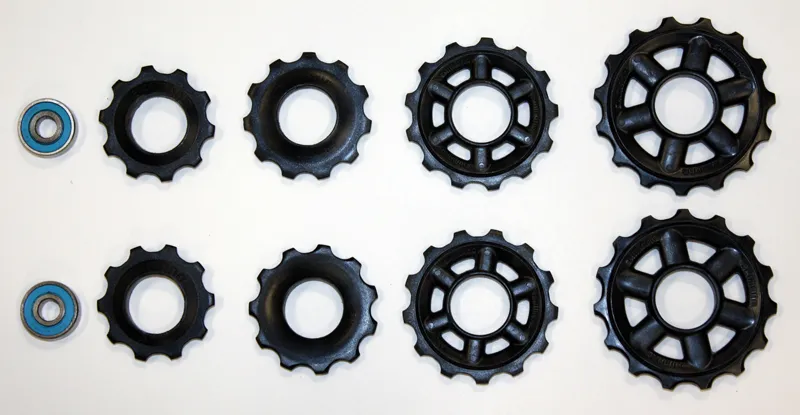Pro road racers who use Berner's uniquely oversized rear derailleur cages have sworn time and again that they reduce drivetrain friction thanks to their humongous 15-tooth pulleys. Now, Jason Smith of Boulder-based lab Friction Facts has confirmed that claim with his own independent testing. Berner-equipped racers such as Fabian Cancellara, Edvald Boasson Hagen, Philippe Gilbert and others will be relieved to know that the advantage is genuinely there – but it's also pretty small at just 1.76 watts compared to a standard Shimano Dura-Ace setup.
According to Smith, the Berner cage derives its advantages from three key principles: pulley size, cage tension and bearing friction.
Smith isolated the effects of pulley size by machining 10, 11, 13 and 15-tooth pulleys to the same bearing bore and then transferring the same two cartridges between tests. Lower chain tension (i.e., the chain tension between the lower rear derailleur pulley and the bottom of the chainring), cadence, and chainring and cog sizes were kept constant throughout testing.
The difference from best (15-tooth) to worst (10-tooth) was very small but still measurable at just 0.49 watts – similar to what others have calculated on theoretical terms. Comparing the 15-tooth pulleys to the 11-tooth ones more commonly used in modern derailleurs, the difference drops to 0.25 watts. Smith contends that the larger 15-tooth pulleys require the chain links to articulate less than with smaller pulleys as they pass through the cage, thus generating less friction between the side plates.
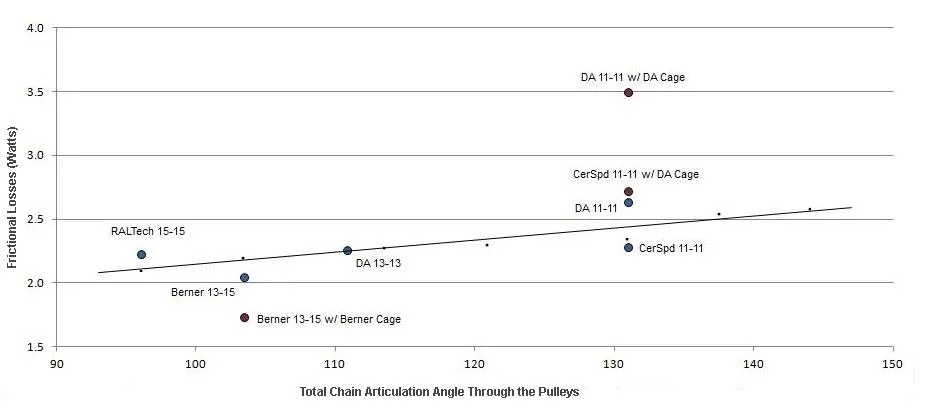
Smith's test results confirm a slight advantage to the Berner system. Lower watts (on the X axis) are better. The Y axis is chain articulation (how much the chain bends) through the pulleys
Subbing in the standard manufacturer's bearings – but still maintaining constant lower chain tension – extends that difference further, says Smith. A standard Shimano Dura-Ace 11/11-tooth pair of pulleys takes 2.6 watts of power compared to 2 watts on Berner's ceramic-enhanced 13/15-tooth setup.
Cage tension also apparently plays a role. In general, less tension is better than more. Smith says a stock Shimano Dura-Ace pulley cage creates 14.19N (3.19lb) of lower chain tension whereas a Berner's more lightly sprung setup creates less than half at just 6.85N (1.54lb). Taking all three factors in total (pulley size, bearing performance and cage tension), Smith measured a difference of 1.76 watts.

Among the pieces tested were (l to r) 15-tooth Dura-Ace pulleys, Berner's 13/15-tooth set, and a pair of 15-tooth pulleys from RALTech
An efficiency gain of less than two watts is hardly earth-shattering for everyday riders and hardly practical when you consider that a ceramic-equipped Berner cage assembly runs about €359 (about US$478 or £305 at straight conversion rates). Two watts is still two watts, however, and for top-end pro riders and teams that rely on race results for their livelihoods, it's relatively "free" speed.
Regardless, Smith's results do have some more real-world implications such as the effects of a small-small vs. big-big gear combination, chain length (which would affect lower chain tension), and chain tension on singlespeeds and track bikes. Stay tuned for more.
Smith's full, detailed report is currently available as a free download at www.friction-facts.com.
